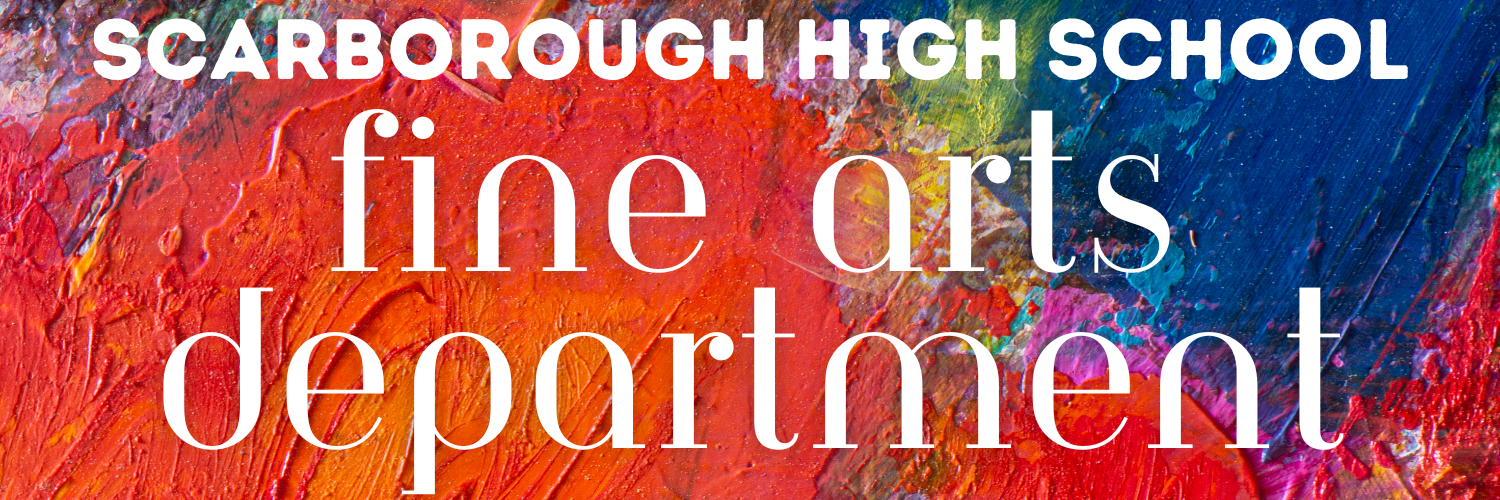Fine Arts Department
-
The fine arts categories of performing arts and visual arts form the basis for a coherent presentation of instructional strategies in the fine arts that support teaching and learning in each of the four disciplines of art, music, theater, and dance.
Art
Four basic strands--perception, creative expression/performance, historical and cultural heritage, and critical evaluation--provide broad, unifying structures for organizing the knowledge and skills students are expected to acquire. Students rely on their perceptions of the environment, developed through increasing visual awareness and sensitivity to their surroundings, memory, imagination, and life experiences, as a source for creating artworks. They express their thoughts and ideas creatively, while challenging their imagination, fostering reflective thinking, and developing disciplined effort and problem-solving skills.By analyzing artistic styles and historical periods, students develop respect for the traditions and contributions of diverse cultures. Students respond to and analyze artworks, thus contributing to the development of lifelong skills of making informed judgments and evaluations.BandFour basic strands--perception, creative expression/performance, historical and cultural heritage, and critical evaluation--provide broad, unifying structures for organizing the knowledge and skills students are expected to acquire. In band, students develop their intellect and refine their emotions, understanding the cultural and creative nature of musical artistry and making connections among music, the other arts, technology, and other aspects of social life. Through creative performance, students apply the expressive technical skills of music and critical-thinking skills to evaluate multiple forms of problem solving.By reflecting on musical periods and styles, students understand music's role in history and are able to participate successfully in a diverse society. Students analyze and evaluate music, developing criteria for making critical judgments and informed choices.DanceFour basic strands--perception, creative expression/performance, historical and cultural heritage, and critical evaluation--provide broad, unifying structures for organizing the knowledge and skills students are expected to acquire. Dance students develop perceptual thinking and moving abilities in daily life that promote understanding of themselves and others and allow them to interact effectively in the community. By mastering movement principles and skills, students develop self-discipline, and healthy bodies that move expressively, efficiently, and safely through space and time with controlled energy.Students recognize dance as a vehicle for understanding cultural and historical contexts, increasing awareness of their own and others' heritage and traditions, thus helping them to participate in a diverse society. Evaluating and analyzing dance strengthens decision-making skills, develops critical and creative thinking, and enables students to make informed decisions about dance and the world around them.
Mr. Max Weimmer
Department Chair
Department Staff
| First Name | Last Name | Content Area | Contact |
|---|---|---|---|
| Jeffry | Hyppolite | Band | jeffry.hyppolite@houstonisd.org |
| Brianna | Sabbath | Dance | brianna.sabbath@houstonisd.org |
| Nicole | Svoronos | Art | nsvorono@houstonisd.org |
| Jaylon | Speights | Theater | jaylon.speights@houstonisd.org |








